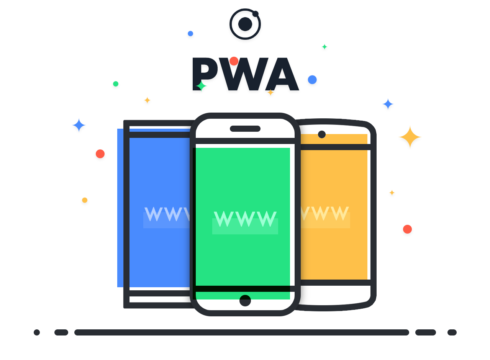Inc42 Daily Brief
Stay Ahead With Daily News & Analysis on India’s Tech & Startup Economy
The mobile world was recently abuzz with excitement about a new development called Progressive Web App (PWA), and with good reason.
In combination with another tech innovation called Accelerated Mobile Pages, PWA effectively addresses two of the main issues affecting conventional mobile websites – slow load time and an inability to recreate the functionality and features of a native mobile app. PWA made it possible for mobile websites to not only load at a much faster rate, but also deliver a rich, immersive experience to the end-user. But while this development has prompted doubts about the need and efficacy of native apps, a more pertinent question to ask would be this – is PWA actually capable of replacing them?
No – that would, in effect, be the most concise and accurate answer to this question. Just like any fulfilling meal is incomplete without both main course and dessert, a holistic user experience requires PWA-powered mobile websites as well as native apps. But culinary comparisons aside, PWA cannot replace native apps just yet, and here is why:
Better Discoverability And Security
There are 1.13 Bn websites on the Internet. In comparison, there are only around 5 Mn mobile apps across several mobile OS platforms. Simple mathematics indicates that there is a much higher chance of a native app to get discovered than a website.
What also works in the favour of mobile apps is an added layer of security. It is very difficult to regulate and vet most of the websites available on the internet. Mobile operating systems such as Android and iOS, on the other hand, do not allow apps to be published on their platforms without security checks. This gives users an assurance that the content they view and consume is filtered.
Lack Of Complete Native Experience
Despite rapid advancements in its functionality, PWA is still unable to recreate all the features of a native app at present. This slightly restricts the user experience on the mobile website when compared with a native app.
The concern compounds if the device used to access the website in question is an iOS device. With not many browsers including Safari offering PWA support for the iOS platform, the user experience remains incomplete without a native app to back it up.
Lower Consumer Retention And Higher Costs
One of the most spoken about benefits of PWAs is ‘no commitment.’ Users do not have to download and install an app, and can simply browse through the mobile website. Brands, however, need to be wary of this ‘convenience’.
Several studies have indicated that native apps drive better conversions and enable enhanced consumer retention. Having gone through the effort of downloading a mobile app, most users are also hesitant to delete the app, which in turn offers improved retargeting opportunities to brands. Going PWA-only can lead to brands missing out on these behavioural benefits.
Costlier Leads And Lower LTV
Mobile website leads are generally costlier than mobile app leads, with a significantly lower conversion rate. This increases the average cost of acquisition for businesses using mobile websites over mobile apps. Lower retention for websites also means that the average Lifetime Value (LTV) of the customer goes down significantly.
Availability Of Instant Apps
The basic hurdle that often pushes users to mobile websites is the lack of understanding regarding usage of the app. The launch of Android Instant Apps has eliminated this issue by giving a quick preview of the app before its downloaded. With similar feature expected to be launched on other platforms, the receptiveness towards app usage will further increase.
These comparisons underline why PWA must not be considered as a godsend replacement for native apps just yet. For a product to be really successful, the focus must be on enabling a seamless usage experience across all platforms, be it desktop website, mobile app, or PWA-based mobile website.
Consider the user experience as a jigsaw puzzle. One piece goes missing, and the puzzle will forever be incomplete.
[The author of this post is Mithil Srivastav, Mobility Head at HDFC RED.]
Note: We at Inc42 take our ethics very seriously. More information about it can be found here.


